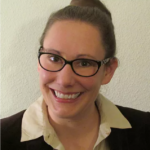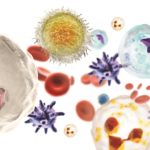Could a Sequence-Specific Splice Switching Oligonucleotide and Antibody Therapy Combination Successfully Treat Rhabdomyosarcoma?
Could a Sequence-Specific Splice Switching Oligonucleotide and Antibody Therapy Combination Successfully Treat Rhabdomyosarcoma? https://pediatricsnationwide.org/wp-content/uploads/2021/03/AdobeStock_58708006-1-1024x683.jpg 1024 683 Jessica Nye, PhD Jessica Nye, PhD https://secure.gravatar.com/avatar/?s=96&d=mm&r=g- February 28, 2022
- Jessica Nye, PhD

Blocking alternative splicing may be a viable therapeutic intervention strategy for reducing tumor growth in rhabdomyosarcoma (RMS).
RMS is the most common pediatric soft tissue sarcoma and is associated with poor prognosis, a high rate of metastasis and recurrence. RMS tumors overexpress insulin growth factor (IGF)-2, making the IGF pathway a potential interventional target. Unfortunately, clinical trials using IGF-1R antibodies failed to reduce tumor growth or improve prognosis.
“It turns out that IGF-2 is able to bind to a second receptor which is not being blocked by that antibody and it takes over to promote growth and tumorigenesis. The second receptor is caused by the alternative splicing of the insulin receptor (IR) gene,” says Dawn Chandler, PhD, principal investigator in the Center for Childhood Cancer and Blood Diseases at the Abigail Wexner Research Institute at Nationwide Children’s Hospital, associate professor at The Ohio State University College of Medicine, and senior author of an article published in npj Precision Oncology.
IR is able to generate two isoforms IR-A which skips exon eleven and IR-B which is the full-length isoform. Normal muscle cells and RMS cell lines differ significantly in their expression of IR-A, in which tumor samples have significantly increased IR-A expression.
Dr. Chandler and colleagues sought to target both IR isoforms in concert by designing a specific Splice Switching Oligonucleotide (SSO) which would decrease expression of the IR-A isoform, restoring expression of the IR-B isoform which can no longer bind to IGF-2 efficiently.
During the design process, out of a possible six overlapping SSOs, two were found to induce IR-B expression by 60%-82%.
“We designed a sequence-specific SSO which is 21 nucleotides long. We were not able to find any secondary targets in the genome, which makes it super powerful. It has the ability to change the splicing and perhaps the outcome for patients,” says Dr. Chandler.
In addition to the restoration of IR-B expression, cells transfected with the SSO had decreased proliferation (P £.01) and a six-fold reduction in migration (P =.05).
“I was surprised that the SSO works as well as it does. We really only have a rudimentary understanding of this spicing mechanism and we only targeted one element. But it is really effective at changing the splicing,” says Dr. Chandler.
To assess whether this technology may translate to an in vivo platform, severe combined immunodeficient (SCID) mice were injected with RMS cells transfected with the SSO or a control. At one to three days after injection, half of the mice received the anti-IGF-1R antibody. Mice that received the dual SSO/antibody therapy were found to have a higher percentage of IR-B isoforms and significantly less blood vessel formation.
“Right now, we’re focusing on delivery, because we can get the SSO to work in tissue culture and in the mice when we pretreat the cells. We just have to get the SSO to the tumor so we can get it to work for patients.” If the SSO therapy can be successfully administered, this type of therapy could be applied outside of RMS. “Even if the molecular mechanisms of cancers are completely different, the pathways that lead to cancer are oftentimes very similar. We think that [this technology] may be applicable to numerous cancer types, including adult breast cancer, that have failed, in the same way as these pediatric cancers have, to the original antibody therapies,” concludes Dr. Chandler.
Reference
Khurshid S, Montes M, Comiskey DF Jr, Shane Bm Matsa E, Jung F, Brown C, Bid HK, Wang R, Houghton PJ, Roberts R, Rigo F, Chandler D. Splice-switching of the insulin receptor pre-mRNA alleviates tumorigenic hallmarks in rhabdomyosarcoma. NPJ Precision Oncology. 2022;6(1):1. doi:10.1038/s41698-021-00245-5
About the author
Jessica Nye, PhD, is a freelance science and medical writer based in Barcelona, Spain. She completed her BS in biology and chemistry and MS in evolutionary biology at Florida State University. Dr. Nye studied population genetics for her doctorate in biomedicine at University of Pompeu Fabra. She conducted her postdoctoral research on the inheritance of complex traits at the Autonomous University of Barcelona.
-
Jessica Nye, PhDhttps://pediatricsnationwide.org/author/jessica-nye-phd/
-
Jessica Nye, PhDhttps://pediatricsnationwide.org/author/jessica-nye-phd/
-
Jessica Nye, PhDhttps://pediatricsnationwide.org/author/jessica-nye-phd/January 3, 2022
-
Jessica Nye, PhDhttps://pediatricsnationwide.org/author/jessica-nye-phd/










